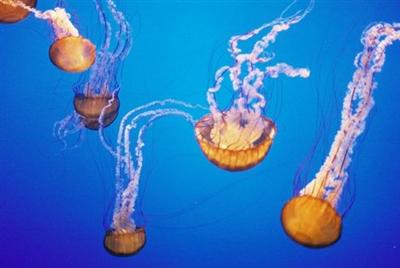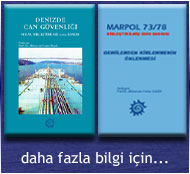Extension of implementation schedule for vessels subject to ballast water management (BWM) discharge standards of USCG
8 october 2013
United States Coast Guard (USCG) published the Policy letter regarding the provision to grant an extension to the implementation schedule for ballast water management discharge standards for vessels using USCG approved ballast water management systems as provided in 33CFR151.1513 and 151.2036.
When making the extension request, it must provide documentation that despite all efforts to meet the ballast water discharge standard requirements, compliance by the date stipulated in the implementation schedule is not possible for the concerned / subject vessel.
The maximum duration of an extension issued by the USCG will not exceed 5 years from the vessel's implementation date. The applicants should recognize that implementation date is the actual date of delivery for new vessels.
Also note that the extension request must be filed with USCG no later than 12 months before the vessel's applicable implementation date.
The minimum vessel specific information shall include:
1. Vessel Name;
2. Vessel IMO or other official number;
3. Total ballast water capacity; and,
4. Scheduled delivery date on or after December 1, 2013 for a new vessel; or last drydocking date and first scheduled drydocking date after January 1, 2014 or January 1, 2016, as applicable, for existing vessels.
Inclusion of the following information will aid the USCG in making decision:
1. Documentation from shipyards indicating a lack of capability or capacity to install a ballast water management system on the vessel to comply with the implementation schedule;
2. Documentation of non-availability of suitable onshore facilities to receive untreated ballast water;
3. Documentation of non-availability of water from a U.S. public water system defined by 40CFR141.2 that can be used as ballast water;
4. Documentation attesting that USCG type approved ballast water management systems suitable for specific vessels of a particular design are not yet available;
5. A plan that indicates how the vessel will manage ballast water discharges that take place in U.S. waters;
Source:NK
The 9th Annual
Ballast Water Management Technology Conference
11 - 12 December 2013, Congress Centre, London
International Maritime Organization Ballast Water Regulations
Updated 1.oct 2013
In 2004, the International Maritime Organization (IMO) adopted the International Convention for the Control and Management of Ships' Ballast Water and Sediments (BWMC), which addresses the transportation of potentially harmful organisms through ballast water. The Convention requires ships to conduct a ballast water exchange or to meet concentration-based ballast water discharge standards at ports with ballast tanks 99% free of living organisms and pathogens. Additionally, these vessels must comply in accordance with the implementation schedule that is linked to the ship’s build date and the amount of ballast carried aboard the ship. Entry into force will occur 12 months after ratification of the IMO BWM Convention by 30 States representing 35 percent of world merchant shipping gross tonnage.
The status of the conventions can be found here.
Pertinent facts of the Convention are identified below.
- The Convention will apply to all vessels flagged in countries Party to the Convention (vessels operating exclusively in the waters of one Party may be exempt) and to vessels operating in the waters of a Party to the Convention unless a specific exemption is granted.
- Regulation D-2 of the Convention prescribes discharge standards for organisms and pathogens that may be discharged with ship’s ballast water.
- An existing small capacity vessel (<1,500 m3) built prior to 2009 will be required to meet the D-2 standard following its first intermediate or renewal survey starting in 2016.
- Ships constructed before 2009 with a ballast water capacity of between 1500 m3 and 5000 m3 must conduct ballast water management that at least meets the ballast water exchange standards or the ballast water performance standards until 2014, after which time it shall at least meet the ballast water performance standard.
- Ships constructed before 2009 with a ballast water capacity >5000 m3 must conduct ballast water management that at least meets the ballast water exchange standards or the ballast water performance standards until 2016, after which time it shall at least meet the ballast water performance standard.
- Ships constructed in or after 2009 with a ballast water capacity <5000m3 must conduct ballast water management that at least meets the ballast water performance standard.
- Ships constructed in or after 2009 but before 2012, with a ballast water capacity ≥ 5000m3 shall conduct ballast water management that at least meets the ballast water performance standard.
- Ships constructed in or after 2012, with a ballast water capacity ≥ 5000m3 shall conduct ballast water management that at least meets the ballast water performance standard.
- Ships are required to have on board and implement a Ballast Water Management Plan approved by the Administration (Regulation B-1). The Ballast Water Management Plan is specific to each ship and includes a detailed description of the actions to be taken to implement the Ballast Water Management requirements and supplemental Ballast Water Management practices.
- Ships must have a Ballast Water Record Book (Regulation B-2) to record when ballast water is taken on board; circulated or treated for Ballast Water Management purposes; and discharged into the sea. It should also record when Ballast Water is discharged to a reception facility and accidental or other exceptional discharges of Ballast Water
More information regarding the IMO Convention on Ballast Water Management and the corresponding guidelines can be found here.
When the IMO BWM Convention has been ratified, there will be many ships past due in meeting compliance deadlines. In order to prevent further delays in the installation of your BWTS and to ensure compliance, contact Hyde Marine today to secure the reliable, IMO Type Approved Hyde GUARDIAN BWTS for your particular vessel.
United States Regulations
In the U.S., ballast water is regulated by two entities: the Environmental Protection Agency (EPA) under the Clean Water Act and the United States Coast Guard (USCG) under a Memorandum of Understanding (MOU) with the EPA.
Within the U.S., ballast water is regulated as a discharge incidental to the operation of a ship under the Clean Water Act. Ships are permitted to discharge ballast as regulated by the EPA’s Vessel General Permit (VGP) program. This program regulates all of the incidental discharges from vessels that occur as part of normal operation such as deck-run-off, bilge water, and waste water.
Pertinent facts of the current VGP, set to expire in December 2013, are:
- Treatment of ballast water for all vessels is not an explicit requirement under the VGP program.
- A requirement prohibits the discharge of untreated or un-exchanged ballast water within designated federally protected waters.
- Federally protected waters in the Great Lakes include, but are not limited to, Isle Royale National Park, Grand Portage National Monument, and Pictured Rocks National Lakeshore.
In 2012, the EPA published an update to the VGP program, scheduled to come into force on 17 December 2013. This new, proposed regulation includes more stringent rules on ballast water:
- Treatment of ballast water is a requirement for all vessels subject to the permit. Exchange is allowed up to an implementation date as set by the EPA and USCG.
- Mandate of periodic sampling of ballast water based on type of BWTS used. For systems with “low value data,” testing is required quarterly. Systems with “high value data” have extended testing requirements. Testing is conducted to verify effluent discharge quality.
- Exemption from requirements for vessels under 79 ft or with less than 8 m3 of ballast water.
- Phase 1 standard set at IMO D-2 levels. It provides guidance for review of standards in the future if a Phase 2 standard is technologically available.
More information on the EPA’s Vessel Discharge Program can be found here, and for more information on Invasive Species click here.
On June 21, 2012, the USCG published its final ruling on ballast water treatment. As with the IMO Convention, this rule sets forth a timeline for ballast water treatment requirements.
Pertinent facts are discussed below.
- The regulation will apply to all commercial ships discharging ballast in U.S. waters.
- Vessels operating exclusively in one Captain of the Port (COTP) zone are exempt.
- The Rule prescribes discharge standards for organisms and pathogens that may be discharged with ship’s ballast water equal to the IMO standard in D-2.
- Small capacity vessels (<1,500 m3) and large capacity vessels (>5,000 m3) built prior to 1 December 2013 are required to meet Phase 1 standard by the time of first major drydocking after 1 January 2016.
- Vessels between 1,500 and 5,000 m3 ballast capacity are required to meet the Phase 1 standard by the time of their first major drydocking after 1 January 2014.
- All vessels constructed after 1 December 2013 are required to meet the Phase 1 standard at delivery.
- Systems with IMO G8/G9 approval may request approval as an Alternative Management System which allows operation in the United States for up to 5 years following implementation date for a particular vessel.
- All systems for permanent use in the waters of the United States must achieve USCG Type Approval.

Ballast Water Management
Brezilya PSC yetkilileri 1 Ocak 2008 tarihinde yaptıkları bildirimle balast suyunun yoğunlugunun 1.025 olarak numunelerde istendigini bunun sağlanması ve aksi takdirde cezalarla karşılaşılacagını bildirmiştir.
SLSDC tarafından ise 2008 sezonu için kıyıdan en az 200 deniz mili mesafeden balast değişiminin yapılması
- Tuzluluk oranı minumum binde 30 olmalı
- Kurallara uyulmadıgı takdirde yaklaşık 36 .000dolara kadar ceza kesileceği bildirilmiştir.
Bu konularla ilgili olarak MSC 1145 sirküleri,ve MEPC 124(53) kararına bakınız
Gemilerde yeni bir dizayn
.jpg)
Michigan Üniversitesi kargo gemileri için yeni bir radikal bir dizayn yaparak; sucul canlıları taşıması ile eko sistemi bozan balast tanklarını elimine etmişlerdir.
Büyük göller bölgesinde taşınan zebra midyeleri başta olmak üzere sucul canlılar için gemilerin bu bölgeye girmeden önce tanklarını flaş etmeleri istenmektedir.Ayrıca balast arıtma teknolojilerine maliyetleri artıracak yatırımlar yapılmaktadır.
Balast tanklarının yerine yeni bir dizayn yapılarak su hattının altında baştan kıça kadar uzanan trunk adı verilen büyük kanallarla çok yavaş sabit bir akım oluşturulmaktadır.Bu sistemde bölgesel su taşınmakta ve deniz ortamına olumsuz etkisi olmamaktadır.
tarih:27.03.2008 23:52
.JPG)
Amerika da Balast Suyu ile ilgili yeni öneri
IMO standartlarında Balast suyu arıtma ekipmanının 31 Aralık 2008 tarihinden sonra ilk havuzlama tarihinde donatılması zorunlu tutuluyor.US standartlarında ki ekipmanın ise 31 Aralık 2013 geç olmamak üzere 31 Aralık 2011 den sonra ilk havuzlamada uygulanacak
Kaynak :EPA
Haberin girildiği tarih 1.05.2008 18:01
Yeni*
Kuzey Dogu Atlantik ve Baltık Denizinde isteğe baglı Balast Suyu Değişim rehberi:
Bu rehber OSPAR ve HELSİNKİ Sözleşmelerine Taraf Devletler tarafından uygulanır. Atlantikten transit geçen gemilere ya da rotası Kuzey Afrika kıyılarından geçip OSPAR ya da HELSINKI Sözleşmelerinin etkiledigi alanlara giren ;(ancak Akdenizden gelen gemileri etkilemeyen ).gemiler Kuzey Dogu Atlantikde en az 200m derinlikte ve en yakın karadan 200 deniz mili mesafede balast sularını değiştirebileceklerdir.Gemiler MEPC 127(53) kararı uygunlugunda Balast Suyu İşletme Planı(G4) olacak ve balast suyu işlemlerini kayıt edeceklerdir.Diger bir hususda Baltık denizi ya da Kuzey Dogu Atlantik kıyılarında balast tankları temizlenirken sedimentler bırakılmayacaktır.


.jpg)
